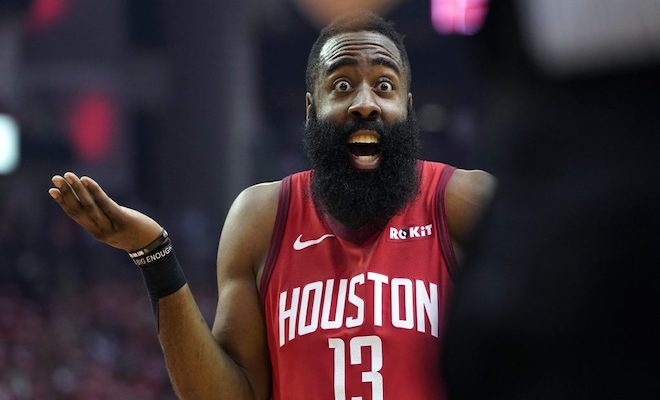-
 August 5, 2023, 1:52 pm
August 5, 2023, 1:52 pmIn fantasy leagues “injury-prone” is a risk most people avoid. Some embrace it. What do they know? Is “injury-prone” a real thing or just a bias? If a player missed games in the past does that mean he will in the future? Last year this gamble on “injury-prone” Kristaps Porzingis paid off. So how much of a gamble was it actually?
Very few injuries are considered career-ending these days. Even Derrick Rose and Shawn Livingston continued their careers following terrible injuries. Hold your breath, Lonzo Ball owners. Teams are better at treating injuries and maintaining player health these days. Thanks load management?
Load management sucks from a fan perspective, but it has generated a lot of new information that fantasy managers can use to estimate injury risk. If we can assess that risk better than the other managers in our league then we have shaded probabilities of success to our advantage.
Our goal in this piece is to see if the injury-prone tag is a real predictor or misperception for particular players. To make this information useful we created a rubric across a few basic variables that professional analytics firms commonly use for modeling injuries. Several metrics that correlate with a higher risk of injury are summarized below. This is just an introduction, but we plan to have every “injury-prone” player broken down in our upcoming draft guide!
PURCHASE THE ALL-SPORT FantasyPass NOW BEFORE THE PRICE GOES UP TO $10/MONTH!

Useful Metrics
Injury history
Player injuries vary. The ones we are concerned with are major joint injuries, repeat injuries on the same body part and chronic conditions. Once a player incurs two or more of the same or similar injury, this is a flag. So Mitchell Robinson breaking a hand and a foot isn’t much of a concern. However, his two concussions are a mild concern.
James Harden’s hamstring has its own substack at this point.
Physiology
Body mass index and age are the primary concerns here. A common baseline for increased injury risk is 6’8” and 230 pounds. A lot of players are bigger and more mobile than in years past. 6’8” 230 used to be exclusively power forward. Today there are guards close to that size. Basic Newtonian physics says Zion and Joel Embiid will be injury-prone. Even less mobile ones like Nurkic and, god forbid, Jokic should be injury-prone as well.
Mileage
Basketball players run and jump. How much matters. Over time the concerning amount is calculated not only from active games and minutes played but has to include playoffs, practice, and optional play like Olympics and Drew league. Even coaching style and practice rigor can be a factor. Professional teams will monitor mileage over shorter periods like playing four or more games in a week or 150 minutes played per week (note: there is a more intensive metric called Chronic Workload Ratio for you grinders. As game and minute totals rise and players age, rest days will be a factor. Load management is part of this and after all a missed game is a missed game. For our rubric, we will use an average of 30 minutes per game over an eight-year career.
Player Mechanics
The force on human joints can be up to 10 times the player’s body weight for certain motions. New data on body symmetry, gait and super-pronation (e.g. Sam Bowie) are available to teams. If you can catch on to this detail it’s a huge sell sign. We don’t have that data but we can look for frequent minor injuries which can be symptomatic of irregular player mechanics.
Style of Play
Some players just seem to take more hits and falls than others due to aggressiveness and style of play. Certainly, leapers all maintain this risk. Zion qualifies here. Players that drive more encounter more injuries, like Ja. Interestingly, block rate, high usage, and low efficiency has a high correlation to injury as well. To read into those metrics, the more work a player puts into the game, the higher risk of injury.
Personal
Player personal habits, physical and mental, are a contributing factor to injury risk. Does the player stay in shape or go to the club? Players that play themselves into game shape each season are more prone to risk. Psycho-social factors (e.g. COVID, mental health) can interrupt play as well.

Methodology Example
Let’s use Bradley Beal as a test case. Beal has played in 77% of all possible regular season games. Not great but not terrible from a durability standpoint. At 33 minutes per game that’s a lot of mileage. He does have some injury history to show: back, repeated bone stress injuries, hamstring, ankle. It seems Brad may unfortunately suffer from some biomechanical challenges. Lastly, Beal is an aggressive player who drives to the basket frequently. All in this gives Beal four flags and a high injury risk in our rating system, and certainly a load management candidate.
To compare a different style of player we can look at Porzingis. The major injury history is certainly there with his knees and back. He is over the physical stature for elevated risk. Like Beal, there have been repeated minor injuries which may indicate risk from mechanics. Mileage isn’t terrible for a guy who has been in the league as long as he has. He’s played almost 300 fewer games than Beal. Style of play is an interesting question for him. He blocks shots but isn’t what you’d call a leaper. In fact, his blocks have declined significantly over the last few years which may indicate risk mitigation on his part.
So the rubric predicts Bradley Beal as a higher injury risk than Kristaps Porzingis. I doubt most fans have this impression, but the data supports the claim.
With this rubric, we can look across the categories for certain players and get to some determination of what their overall risk is. The table below shows a mix of players, ages and playing styles that have all carried the “injury-prone” tag. This grading system assigns flags to where a player’s risk seems above average, and in looking at the total number of flags we get an idea of overall and relative risk of missing games. In this system, two or fewer flags means “low risk,” three is “moderate risk,” and four or more is “high risk.”
You will likely have to scroll right to see the final verdict!
Player Name Injury History Physiology Mileage Mechanics Personal Style of Play Risk Level Jaren Jackson Jr. 

Low Jusuf Nurkic 

Low Kristaps Porzingis 


Moderate Robert Williams III 


Moderate Bradley Beal 



High Jonathan Isaac 


High Zion Williamson 



High Kyrie Irving 


High Blake Griffin 



Destruction Imminent Anthony Davis 




Book It In addition to our flag system, we can use “eyeball” testing to zoom in on certain players that may not have accumulated flags but may be gathering some soon. Kawhi Leonard and Paul George are known to load manage, but is Fred VanVleet joining that squad? Going into this season Luka’s coaches are concerned with his weight. Pascal Siakam turns 30 this season and has been top-10 in minutes played per game for the last four years. How about RJ Barrett? He’s not a small guy, drives a lot and has low efficiency and high usage. Some things to watch.
As your leagues go forward with the new season you now have a new way to assess value. Watch short-term and long-term trends, workload and physiology. In redraft, you can pivot quickly from players who show elevated risk or seek out those that seem overly risky but perhaps are not. Dynasty managers can find an advantage by more accurately pricing player assets to acquire or sell.
Winning is a direct result of what you spend in your draft or auction capital. Their value should be related to your performance return. It’s said top money managers don’t accept risk, they manage it. Now you can too.
Read Next: The First Annual ADN Team
Thanks to these sources:
Cohan et al 2021
Tummala Morikawa et al 2022
https://www.prosportstransactions.com/basketball/
